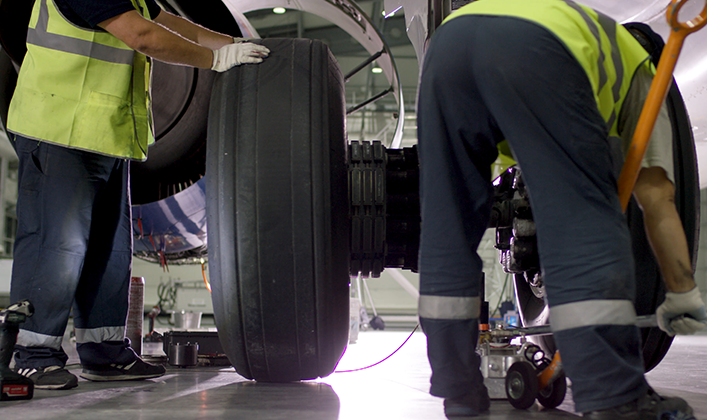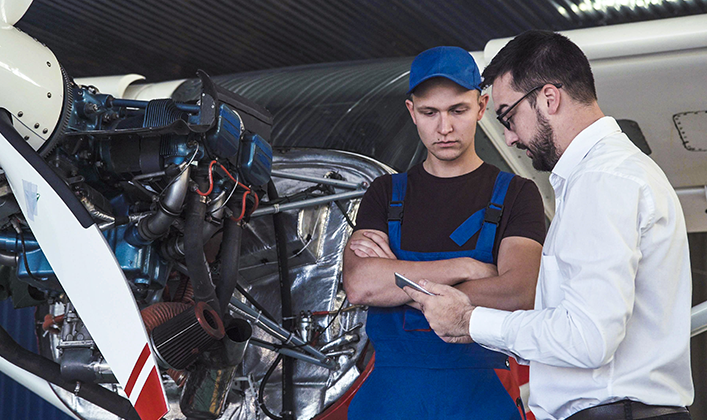
Here’s a question for you: What’s the most important factor you take into consideration when buying your aircraft material?
If your answer is not “the price”, you should check your priorities. Almost all purchasing departments worldwide set pricing as a deal breaker or maker.
However, don’t confuse price with cost. These are two completely different factors. Price is the money you pay directly to the seller. Cost is the money going out, through your aircraft materials life cycle: purchase, repair, spare parts, exchange fees, etc.
Your aircraft’s maintenance, repair, and overhaul costs are defined by unpredictable demand, complex operations, and future planning for thousands of parts & components. A lack of methodical, “fit-for-purpose” planning that addresses these challenges leads to uncertain decisions, which result in an unnecessary increase in costs and downtime. It can create an unstable supply chain which many organizations are now looking to solve.
Back in 2012, Airbus and Boeing recommended large suppliers to either purchase smaller businesses or collaborate with them, to maintain a risk-free supply chain operations. With the increase in orders, and a certain need to decrease supply chain costs, consolidation is the king’s road to preserve the aviation industry.
As a procurement professional, it is vital to purchase for a total cost of ownership (TCO). This way, a company can keep operational cost at a minimum, allowing your team to be more efficient and make better decisions.
We have gathered five essential tips to help you develop a total-cost mindset and decrease overall expenses:
1. Focus on Improving Internally First
Before you address your external costs, it is advised to first cut your internal costs by standardizing the procurement processes not just for short-term gains. Setting efficiency KPIs and achieving them can prove beneficial for your bottom line. This will involve hard decisions that will result in establishing effective lean management and proper workflows.
Another critical issue is the team’s access to information. In order to improve your staff’s upstream/downstream performance, data transparency is key. If employees are restricted in what they are exposed to, they are also limited in what they can achieve.
Also, a lack of proper training and expertise in procurement departments can translate to the ineffective or wrong use of workflow & resources, damaging the purchasing process. It often leads to collaborations with below-standard suppliers, which can be lethal to any organization. This can be easily fixed by creating category manager roles and staffing them with the right people.

Cut your internal costs by standardizing your aircraft parts procurement processes not just for short-term gains.
2. Don’t Fall Back on Habits
Long-lasting partnerships offer stability. However, these relationships can also limit opportunities. When you plan your aircraft line maintenance, you may feel bound or obliged to certain suppliers with whom you transact regularly. There’s a certain convenience in knowing the prices beforehand. Plus, you already know the email address, phone, and full name of your regular suppliers. We know that comparing prices of a certain unit can be time-consuming. But, it is time well spent. By researching production costs, and studying the quantity needed in order to receive reduced prices, you can find out how much you actually should be charged.
Take the time to acquaint yourself with new suppliers, identify their business models, and find leverage points you can use. By learning how they operate, you can make new relationships while strengthening existing ones. No matter what you purchase in the end and from whom, be sure to aim high, insist on facts, understand the companies you transact with, and, most importantly be willing to walk away when necessary.

Take the time to acquaint yourself with new aircraft parts suppliers, identify their business models, and find leverage points you can use.
3. Strategize for the Long Term
Your aircraft spare parts procurement planning must be focused on the company’s future, not on the here and now. Look around you; the aviation industry is saturated with multinational companies going into either administration or liquidation. These companies have failed to adapt to change, technological innovation, and market priorities. This is especially true when talking about the aircraft line maintenance field.
When looking to procure, look for innovation, cutting-edge technology, and customer-facing suppliers. Launch collaborative initiatives that generate cost reduction. Granted, switching suppliers may be a high-risk strategy and might yield unwanted results. That is why you shouldn’t disrupt the balance of your entire operation but rather create mini ‘pilots’ for limited areas and check their success rate. Long-term strategies are built with patience and prudence.
An additional option you should consider is the implementation of innovation in your supply chain. This includes updating designs, integrating the assembly function into bigger systems which are managed internally, etc. The initial fund and workforce investment will be high, but long-term costs decrease will be reflected over time.
4. Con$olidate!
It doesn’t matter if you’re in need for only ten aircraft components or urgently seeking for 100s of parts – always keep an efficiency & cost reduction mindset.
Processing costs can amount. Every time you send a purchase order, you may spend $50-$300 for shipping and logistics. Just think of the amount of money you spend weekly if you cut 50 purchase orders. You can substantially reduce these costs if you commit to efficiency, sometimes by almost 50%.
When in need of a variety of items such as rotables and expendables, consolidate and just watch the shipping costs drop.
Be sure to work with suppliers who have a stellar Support and Sales team. You should be able to receive 10-500 parts within a realistic timeframe. Establish work relationships with these types of suppliers. Don’t forget; not all of your suppliers can quote 500 parts. Start small. If you started to work with a new supplier, start with 10-30 items. Send RFQs, order and then do it again. Build the relationship, test its strength, and carry on from there.
The objective is to consolidate as many parts as possible on a single purchase order or opt for an auto-replenishment solution.

Consolidate as many aircraft parts as possible on a single purchase order or opt for an auto-replenishment solution.
5. Don’t Panic!
Can you full heartedly say you know how much money you spend on transportation? Are you confident that all the suppliers you work with use efficient shipping practice? Don’t fool yourself; shipping is a real expense, and aircraft AOG & overnight orders can seriously set your business back.
Here’s our suggestion to you: each time you order a component, define the deadline for when you need it on your shelf or inside your aircraft. Shipping is usually evaluated at 3-5% of the total transaction cost. ofNow make a decision: is it really an AOG situation?
Now Start Reducing Aircraft Maintenance Cost
The challenges that purchasing costs in aircraft line maintenance are endless. Although we discussed five potential solutions, you can find more by analyzing your business and contacting more suppliers.
Not two businesses are the same. It would be best if you looked to identify the best solutions you’re your individual needs and ensure you integrate them with existing methodologies as to not disrupt your organization. Try to implement a series of solutions that do not conflict with each other, test new providers, listen to your team, and set your priorities.
Got tips of your own on how to dramatically reduce aircraft maintenance costs? I would love to hear them. Simply reply in a comment below!
We would love to get your feedback. Email us and tell us what you think.
Don’t have an account yet? Join ePlane now.



